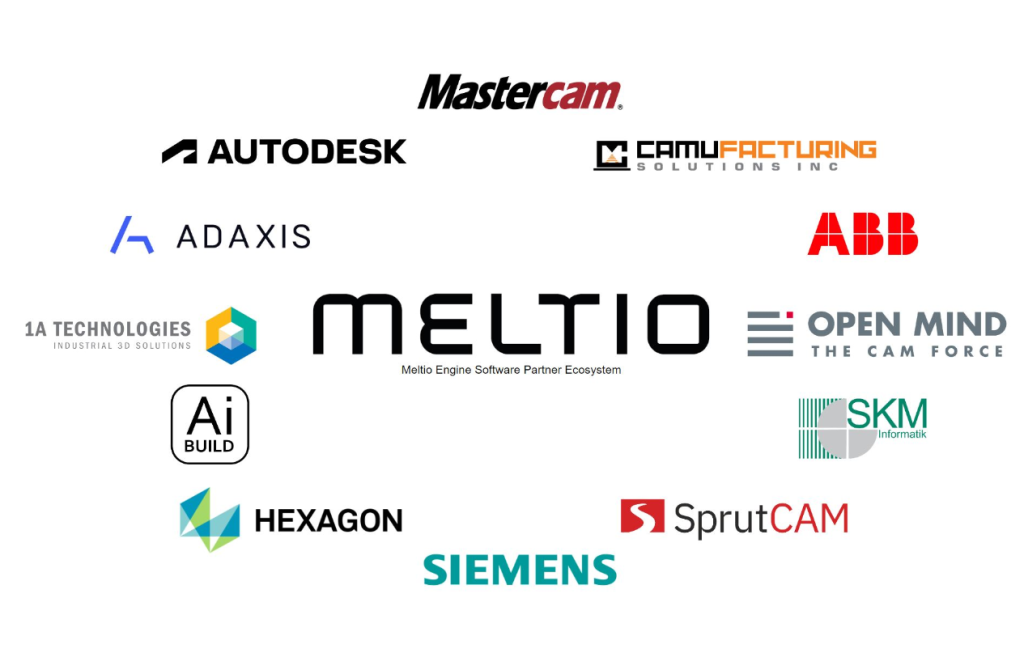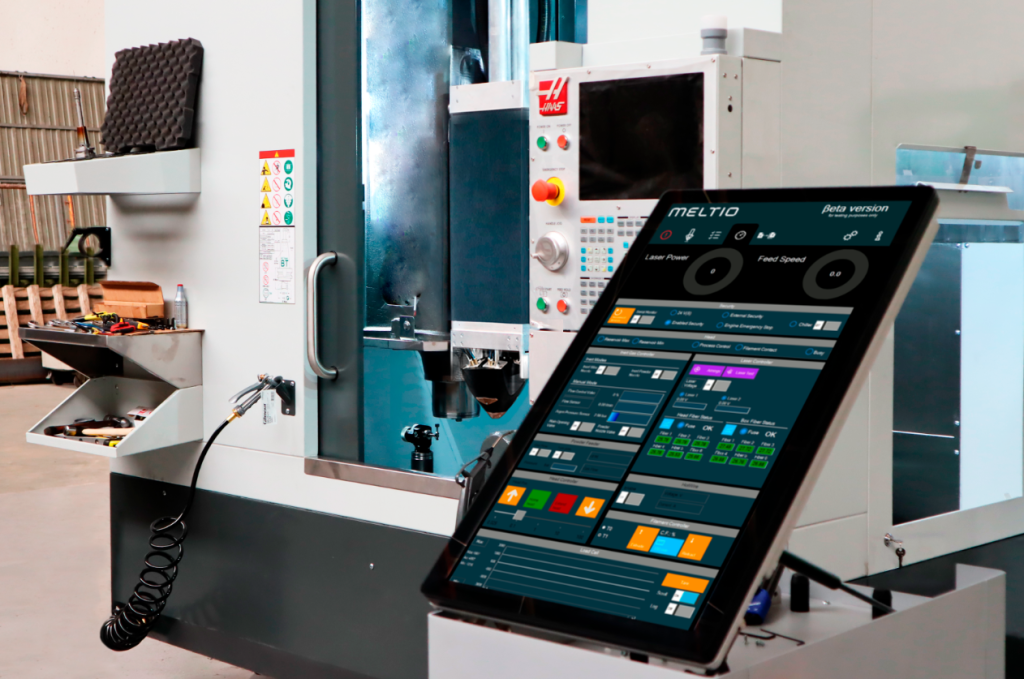Laser metal deposition technology manufacturer Meltio announced its new Meltio Engine Software Partners ecosystem. The company believes this will ensure a set of credible software solutions for customers to determine their ideal software solution to use Meltio Engine CNC Integration and Meltio Engine Robot Integration through this partnership.
The company believes this step will provide end-to-end additive manufacturing software solutions by bringing together the key software players in the additive manufacturing market. Companies that have joined Meltio Engine’s Software Partner ecosystem for hybrid and robotic platforms are SKM DCAM by SKM Informatik, AdaOne by Adaxis, AiSync by AiBuild, Esprit by Hexagon, Fusion 360 by Autodesk, Aplus+Mastercam by Camufacturing and Mastercam, Hypermill by OpenMind, SiemensNX by Siemens, Hy5CAM by 1ATechnologies, RobotStudio 3D Printing PowerPack by ABB, and SprutCAM X by SprutCam.
“For a year we have been working with all of them sharing the needs that we understood most suitable for our customers, going as far as sharing as well as in some cases sharing the mathematical algorithms needed for the functionalities we required. This collaboration between our engineers and the teams of these companies has now resulted in offering this software platform to the market,” said Ángel Llavero, CEO of Meltio.

What does Meltio aim to provide through this alliance?
Meltio intends to provide an open platform for hardware (any robot or CNC) as well as software that enables the use of any software to manufacture metal parts and meet the market’s increasing demands for hybrid and robotic additive manufacturing processes.
The company believes it is critical to offer a great user experience, and consequently has developed a process for technically validating each solution, which it claims excludes extra work between the end user and each software provider. For instance, characterizing post-processors, or ensuring that specific software can utilize the full potential of the Meltio Engine, such as the ability to use two materials in the same part (Dual-Wire). Meltio claims that its engineers have researched the technical requirements for developing slicing strategies for the majority of the parts required by the industry. They’ve defined nine levels of complexity, including example geometries that aid customers and developers understand the variety of parts.
Through enhanced slicing features such as fixed tool orientation, revolved surfaces, features on non-planar surfaces, simple surface coating, radial cladding, 360 features, variable layer deposition, controlled area repair, and non-controlled area repair, this new software ecosystem provides the market with tools to address a variety of parts and industries. According to the company, Meltio’s end-user value is based on providing “freedom of choice” and “healthy competition” in a new market.
“With this alliance, Meltio sends the message to all our customers of the Meltio Engine CNC and Robot Integration that the software that appears is tested and certified for the handling and proper use of Meltio’s technology. With the creation of this new agreement with major software development companies, we continue our strategic goal of facilitating and democratizing metal additive manufacturing. Ease of use and technology is key for us. Meltio’s industrial customers are guaranteed that any software program can have a guaranteed user experience,” added the CEO of Meltio.

Industrialization of the additive manufacturing ecosystems
The World Economic Forum (WEF) previously published a white paper detailing a potential roadmap for quickly driving the rapid adoption of 3D printing in Davos, Switzerland. Despite what appears to be “cycles of hype” surrounding 3D printing, the WEF stated that “not all predictions and forecasts” about its potential “have become reality.” To make the technology more resilient, flexible, and sustainable, the group used its paper to issue a seven-point industry call to action, with the goal of finally reaching the mass-inflection point anticipated in the early 2010s.
“By following the proposed call to action presented in our paper, a major leap in industrializing AM can be jointly developed from within the AM ecosystem,” reads the WEF’s paper. “With these changes, future business models and many new applications will be feasible in the next five to ten years, leading to a steady growth of the overall market, and offering the disruptive potential for some industries.”
Furthermore, in 2018, the Oerlikon Group’s Second Munich Technology Conference (MTC2) gathered industry professionals from around the globe to discuss the industrialization of additive manufacturing ecosystems. The 3D Printing Industry returned for the second year to join over 1000 attendees over the two-day conference, a significant rise from the estimated 600 attendees at MTC1 in 2017. Professionals from the MTC2 discussed a plethora of ideas for a successful additive manufacturing ecosystem, addressing industry challenges and potential solutions.
Follow this link for all the Formnext 2022 news.
To stay up to date with the latest 3D printing news, don’t forget to subscribe to the 3D Printing Industry newsletter or follow us on Twitter, or like our page on Facebook.
While you’re here, why not subscribe to our Youtube channel? Featuring discussion, debriefs, video shorts, and webinar replays.
Are you looking for a job in the additive manufacturing industry? Visit 3D Printing Jobs for a selection of roles in the industry.
Feature image shows companies who’ve joined Meltio’s Engine Software Partner Ecosystem. Image via Meltio.



